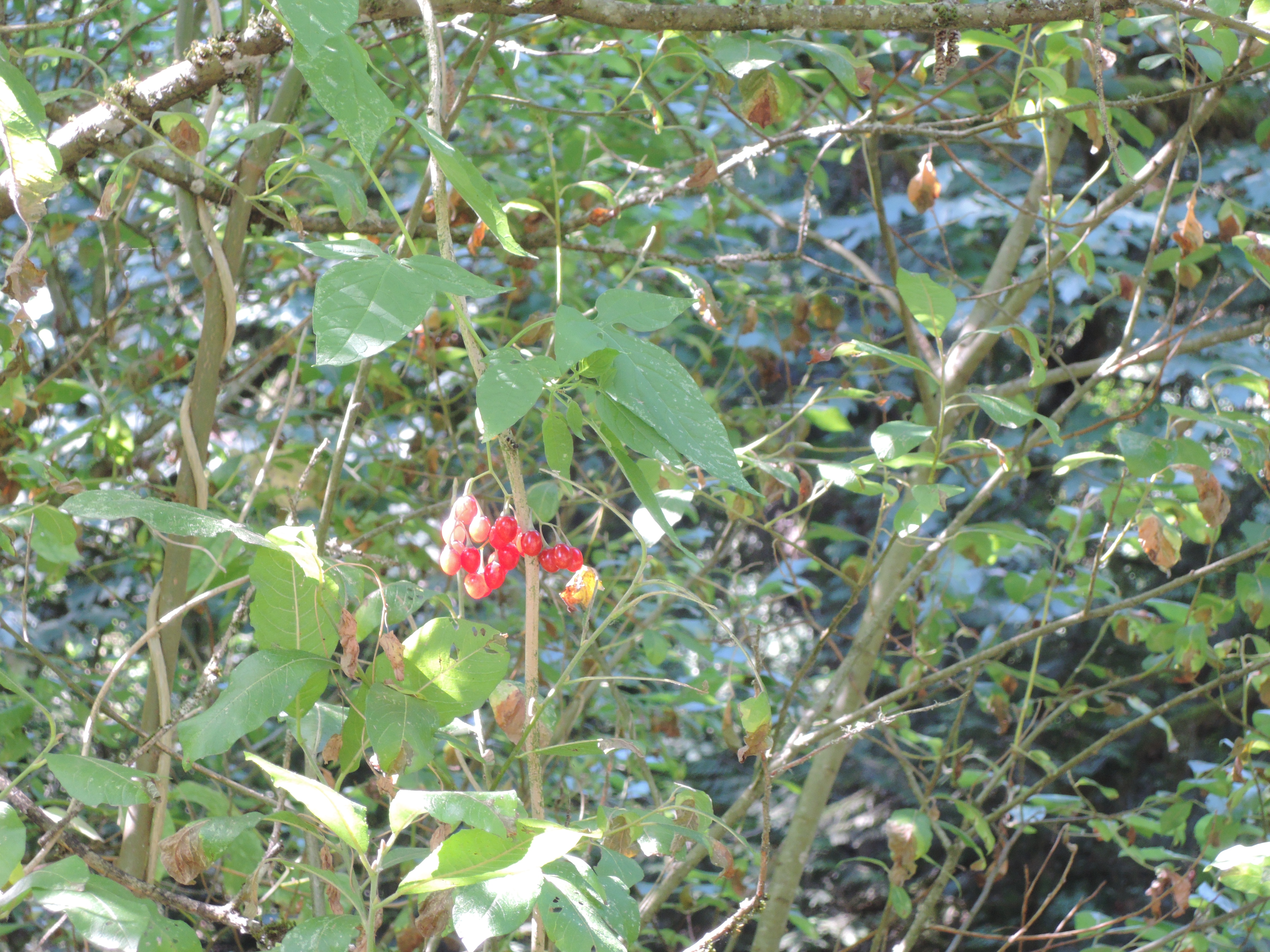Bittersweet Nightshade (Solanum dulcamara) on Oct 1, 2014
Submitter does not have a specimen
EDRR Status: Local expert notified
Description of specimen
I only noticed one vine, but wasn't really thinking about weeds at the time. The red fruit caught my eye.



Reporter
Oct. 1, 2014, 1:07 p.m.
Thank you for reporting this infestation of Bittersweet Nightshade. We always appreciate observations such as these. Bittersweet Nightshade is a problem invader in lowlands and riparian communities within Clackamas County. The Clackamas Soil and Water Conservation District is working with regional partners to map and catalog known infestations to help prioritize future control efforts.
As you have astutely recognized, for many of our most common weeds, there is little opportunity for us to take significant action. As such, our key interests are related to weed species with limited distribution, or those that are especially problematic. This approach is focused on trying to prevent the next Himalayan Blackberry or Scotch Broom.
Each season the Clackamas County SWCD Weed Wise Program and the The Four County Cooperative Weed Management Area (4countycwma.org) offers trainings to identify priority species for the Portland metropolitan area. The 12 currently highlighted species include:
1. Garlic mustard (Alliaria petiolata)
2. False brome (Brachypodium sylvaticum)
3. Starthistles (Centaurea sp.)
4. Spurge laurel (Daphne laureola)
5. Knotweeds (Fallopia sp.)
6. Giant hogweed (Heracleum mantegazzianum)
7. Goats rue (Galega officinalis)
8. Orange hawkweed (Hieracium aurantiacum)
9. Policeman’s helmet (Impatiens glandulifera)
10. Purple loosestrife (Lythrum salicaria)
11. Kudzu (Pueraria lobata)
12. Gorse (Ulex europaeus)
You can download a field guide for these species at http://conservationdistrict.org/?wpfb_dl=208
We will gladly accept any observations you may have for any weed, but the 12 highlighted species, or plants you may consider learning, if you do not know them already. As mentioned before, we are interested in any observations that you may have. All weed observations help us to prioritize future control activities.
If you do come across something that appears to be aggressive or unusual please feel free to forward them along for identification.
Again thank you for reporting this invader. All the best,
Sam
______________________________________
Samuel Leininger
WeedWise Program Manager
Clackamas Soil & Water Conservation District
221 Molalla Ave. Suite 102
Oregon City, OR 97045
503-210-6006
weeds@conservationdistrict.org
www.conservationdistrict.org
______________________________________
Samuel Leininger
Oct. 7, 2014, 4:48 a.m.